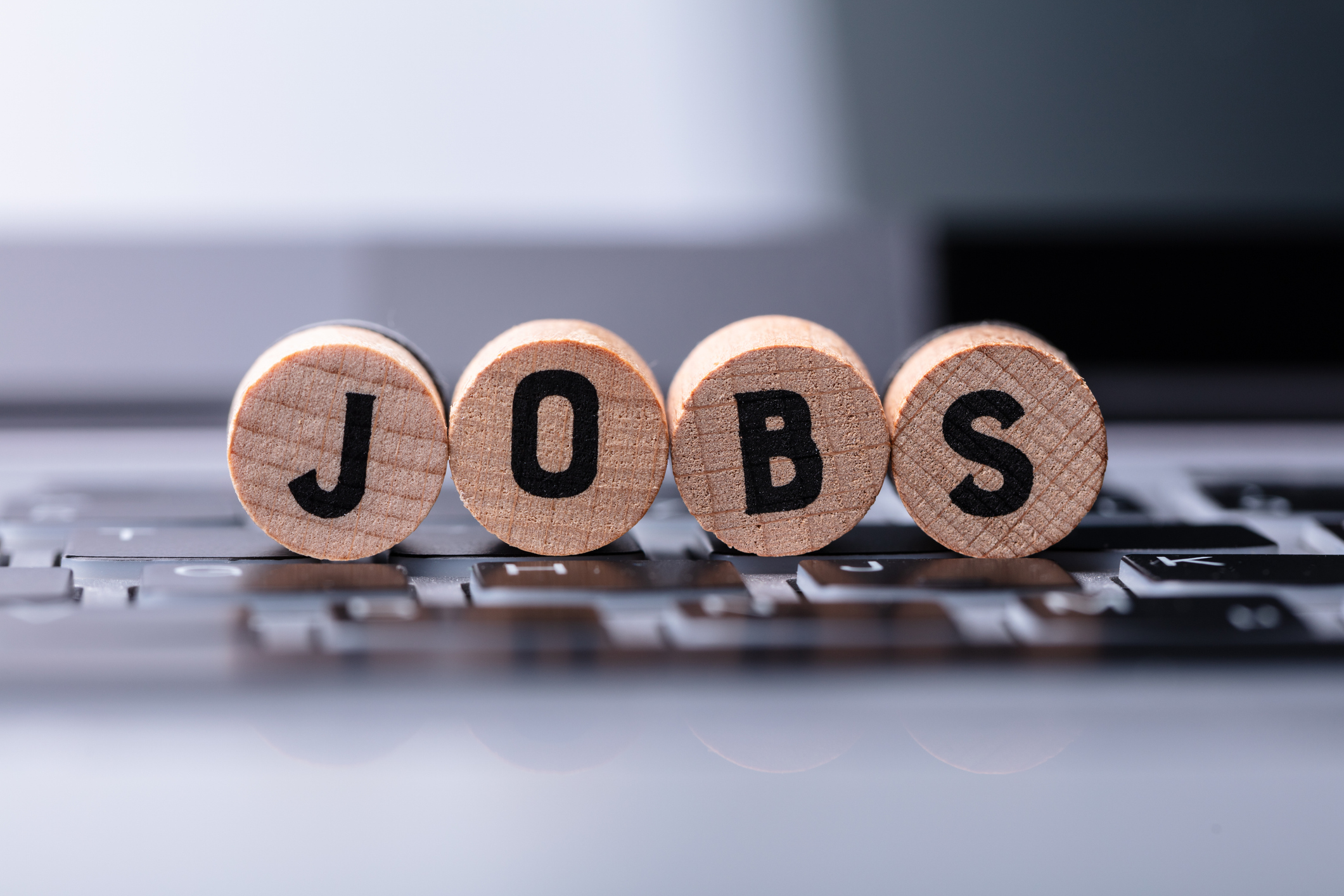5 Best Mutual Funds to Fight Inflation
These five mutual funds cover a wide variety of asset classes, but they share a similar trait: They're effective hedges against inflation.


Inflation is here, and it doesn't look like it's going away anytime soon. Fortunately, investors looking to beat back rising prices have numerous options at their disposal, including several mutual funds that should fare well against inflation.
The January 2022 Consumer Price Index reading was a wake-up call. Consumer prices rose by 7.5% annually – the quickest pace of growth in 40 years. The Federal Reserve, once insistent that most inflationary pressures over the past few months have been transitory, has changed its tune, acknowledging that some rising prices might indeed be quite sticky.
When the economy heats up, investors begin to expect that the Federal Reserve will cool inflation with higher interest rates. (Indeed, CME data puts the chances of a 0.5-percentage-point hike to the Fed's benchmark interest rate at 44.3%, up from 25% before the latest CPI was released.) That puts downward pressure not only on investors' current bond holdings, but also stocks, as corporate borrowing becomes more expensive.
Fortunately, mutual funds can help you beat back inflation via a number of diverse strategies. The best mutual funds for inflation invest in wide range of assets, from Treasury inflation-protected securities (TIPS) to commodities to real estate and more.
Here are five of the best mutual funds to protect against inflation.
Returns and data are as of Feb. 9, unless otherwise noted, and are gathered for the share class with the lowest required minimum initial investment – typically the Investor share class or A share class. If you use an investment adviser or online brokerage, you may be able to buy lower-cost share classes of some of these funds. Dividend yields on equity funds represent the trailing 12-month yield. SEC yields reflect the interest earned after deducting fund expenses for the most recent 30-day period and are a standard measure for bond and preferred-stock funds.

Vanguard Treasury Inflation-Protected Securities Investor
- Fund category: Inflation-protected bond
- Assets under management: $41.3 billion
- Real yield: -1.5%*
- Expenses: 0.20%, or $20 for every $10,000 invested
As you might guess from the name, the Vanguard Treasury Inflation-Protected Securities Investor (VIPSX, $13.98) is a straightforward way to beat back inflation.
VIPSX holds TIPS, which are bonds that are indexed to inflation. This means the principal value of these bonds adjusts for movements in inflation – so when inflation increases, the principal value of the TIPS does, too.
However, while TIPS might perform better during inflationary periods, they still carry interest-rate risk. Specifically, if interest rates rise in a period where there's little or no inflation, the market value of TIPS could decline, which would in turn bring down the net asset value of a fund such as VIPSX.
Still, VIPSX is one of the best mutual funds for inflation. It's right for investors who want to diversify their fixed-income holdings, usually to complement a core bond holding that might not perform as well in an inflationary environment.
Note: Investors able to invest at least $50,000 can get the same exposure at a lower expense ratio (0.10%) via Vanguard's Admiral shares (VAIPX).
* Real yield is adjusted for inflation.

Dodge & Cox Stock
- Fund category: Large value
- Assets under management: $98.7 billion
- Dividend yield: 1.2%
- Expenses: 0.52%
Dodge & Cox Stock (DODGX, $256.07) doesn't just stand out as one of the best mutual funds for inflation – it's also one of Kiplinger's favorite funds, hence its inclusion in the Kiplinger 25.
Value stocks tend to perform better than growth stocks during periods of rising inflation and rising interest rates, for multiple reasons.
For one, value stocks generally boast strong present cash flows that are expected to slow over time, whereas growth stocks have little to no current cash flow now but is expected to rise. However, inflation erodes at that expectation for future cash flows, which hurts growth stock prices today.
Also, some value stocks are simply built to benefit from higher interest rates. Take financial stocks, which can increase the spread between their rates on loans as rates rise, even as they continue to pay low rates to customers on their deposit accounts. Financials make up roughly a quarter of DODGX's portfolio, including top-five holdings Wells Fargo (WFC), Charles Schwab (SCHW) and Capital One Financial (COF).
With a team management approach (average tenure is 13.2 years), performance that consistently beats category averages and a low expense ratio of just 0.52%, it's easy to understand why Dodge & Cox Stock stands tall among its peers.

Parametric Commodity Strategy Investor
- Fund category: Commodities broad basket
- Assets under management: $1.1 billion
- Dividend yield: 2.5%
- Expenses: 0.94%
Another place to find performance amid inflation is commodities.
If you've ever heard the phrase "too many dollars chasing too few goods," that's referring to "demand-pull inflation." Well, commodities such as oil, gold, grains and lumber are the resources used to make those goods that those dollars are chasing.
In that kind of environment, commodity funds such as Parametric Commodity Strategy Investor (EAPCX, $6.86) can thrive, as they're invested in the very assets that are inflating in price.
EAPCX invests in a broad basket of commodities, with agricultural, energy and industrial metals each representing roughly a quarter of the fund, and precious metals and livestock making up the remainder. That means you're invested in everything from cocoa and crude oil to copper and cattle.
Parametric's fund earns five stars from Morningstar thanks to three- and five-year returns that beat at least 90% of its competitors. Its 0.94% in annual expenses is pricier than the other mutual funds on this list, but perfectly average within the commodity space.

Vanguard Real Estate Index Admiral
- Fund category: Real estate
- Assets under management: $47.0 billion
- Dividend yield: 2.8%
- Expenses: 0.12%
Vanguard Real Estate Index Admiral (VGSLX, $151.33) is a low-cost way to invest in real estate investment trusts (REITs).
REITs are a specifically structured business that's designed to own (and sometimes operate) real estate of varying types. Office buildings. Hotels. Hospitals. Even storage units.
Real estate investment trusts provide natural protection against inflation, as their underlying properties (and the rents they charge) tend to appreciate in value alongside consumer prices. This additional profitability tends to help REITs improve their dividends (remember: REITs must pay out at least 90% of taxable profits out to shareholders as dividends), often at a faster rate than inflation.
Neuberger Berman research shows just how resilient REITs have been in the face of inflation:
"In the 12 calendar years since 1991 when inflation was less than 2%, the average return of the REITs Index was 7.4%. If we take out the extreme year of 2008, that average rises to 11.5%. But the average return for the 18 calendar years when inflation was above 2% was 16.5%. Periods of higher inflation appear to have benefitted REITs."
This naturally makes products such as VGSLX some of the best mutual funds to buy to combat inflation. Vanguard's offering holds roughly 170 real estate companies, with top holdings including the likes of communications infrastructure play American Tower (AMT), logistics REIT Prologis (PLD) and datacenter owner Equinix (EQIX).
The fund also comes in ETF form: the Vanguard Real Estate ETF (VNQ), which also charges just 0.12% annually.

T. Rowe Price Floating Rate
- Fund category: Bank loans
- Assets under management: $3.5 billion
- SEC yield: 3.5%
- Expenses: 0.76%
Bank loans are a less-traveled category, but one that investors might want to look at more closely when combatting inflation.
Inflationary periods and rising interest rates often go hand in hand, and that puts downward pressure on many bonds and other fixed-rate investments. However, a certain category of bank loans called floating-rate bank loans can perform well in this environment. Financial institutions will often make variable-rate loans to companies with less-than-ideal credit, and the rates on those loans can change every 30 to 90 days. If interest rates go higher, so too will the rates on these loans.
T. Rowe Price Floating Rate (PRFRX, $9.54) provides exposure to floating-rate bank loans and other variable-rate debt securities. The portfolio is spread across roughly 400 loans, the vast majority of which are rated below investment-grade. Still, the effective maturity of its loans is only five years, and the fund features a low duration of 0.40. (Duration is a measure of bond risk; 0.40 implies that a 1-percentage-point rise in rates would result in a mere 0.4% decline in PRFRX's net asset value.)
While there's some credit risk here, T. Rowe Price Floating Rate is one of the best mutual funds to fight inflation with if you're looking to secure a decent yield as well.
Learn more about PRFRX at the T. Rowe Price provider site.
Kent Thune did not hold positions in any of these bond funds as of this writing. This article is for information purposes only, thus under no circumstances does this information represent a specific recommendation to buy or sell securities.
Profit and prosper with the best of Kiplinger's advice on investing, taxes, retirement, personal finance and much more. Delivered daily. Enter your email in the box and click Sign Me Up.

Kent Thune, CFP, is a financial professional that helps individuals and businesses achieve their goals through a variety of delivery methods, including investment advice, financial planning and writing.
-
 The Rule of Compounding: Why Time Is an Investor's Best Friend
The Rule of Compounding: Why Time Is an Investor's Best FriendDescribed as both a "miracle" and a "wonder," compound interest is simply a function of time.
-
 4 Great Tools to DIY Your Own Financial Plan
4 Great Tools to DIY Your Own Financial PlanSmart Savings Several tools picked out by Kiplinger that DIYers can use to make their own financial plan.
-
 The 7-Month Deadline That Sets Your Lifetime Medicare Premiums
The 7-Month Deadline That Sets Your Lifetime Medicare PremiumsUnderstanding Medicare enrollment is crucial, as missing deadlines can lead to permanent late enrollment penalties and gaps in coverage.
-
 The Delayed November Jobs Report Is Out. Here's What It Means for the Fed and Rate Cuts
The Delayed November Jobs Report Is Out. Here's What It Means for the Fed and Rate CutsThe November jobs report came in higher than expected, although it still shows plenty of signs of weakness in the labor market.
-
 December Fed Meeting: Updates and Commentary
December Fed Meeting: Updates and CommentaryThe December Fed meeting is one of the last key economic events of 2025, with Wall Street closely watching what Chair Powell & Co. will do about interest rates.
-
 What Fed Rate Cuts Mean For Fixed-Income Investors
What Fed Rate Cuts Mean For Fixed-Income InvestorsThe Fed's rate-cutting campaign has the fixed-income market set for an encore of Q4 2024.
-
 The Delayed September Jobs Report Is Out. Here's What It Means for the Fed
The Delayed September Jobs Report Is Out. Here's What It Means for the FedThe September jobs report came in much higher than expected, lowering expectations for a December rate cut.
-
 October Fed Meeting: Updates and Commentary
October Fed Meeting: Updates and CommentaryThe October Fed meeting is a key economic event, with Wall Street turned into what Fed Chair Powell & Co. did about interest rates.
-
 The Delayed September CPI Report is Out. Here's What it Signals for the Fed.
The Delayed September CPI Report is Out. Here's What it Signals for the Fed.The September CPI report showed that inflation remains tame – and all but confirms another rate cut from the Fed.
-
 Banks Are Sounding the Alarm About Stablecoins
Banks Are Sounding the Alarm About StablecoinsThe Kiplinger Letter The banking industry says stablecoins could have a negative impact on lending.
-
 Government Shutdown to Delay Data, Including Key Jobs Report
Government Shutdown to Delay Data, Including Key Jobs ReportWhile government shutdowns typically don't impact stock returns, they can delay the release of key economic data – including the monthly jobs report.
